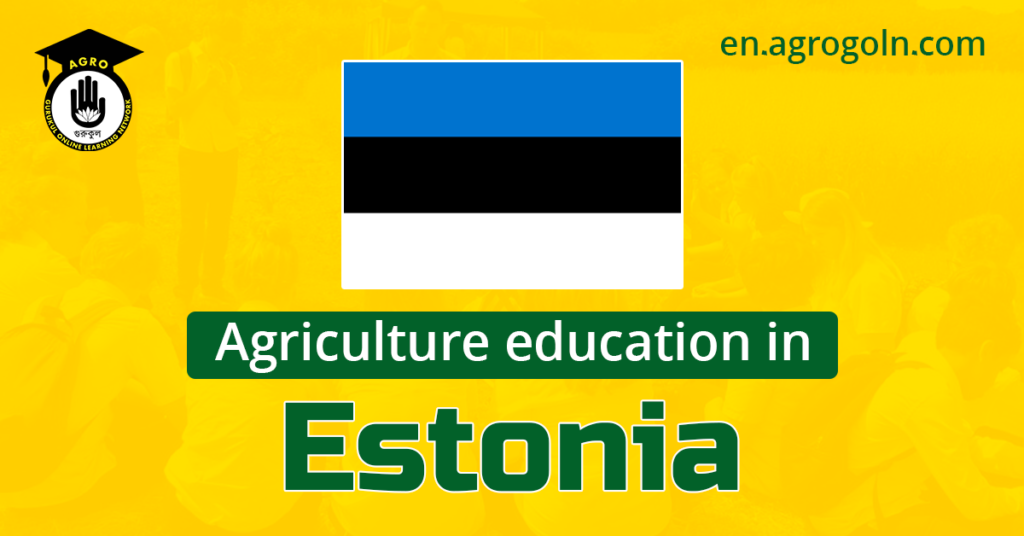Agricultural Education in Estonia.Estonia, a Northern European nation with a rich history and culture, has always had agriculture play an integral part in its economy. Even with the ongoing technological advancements and urban development, the agriculture sector remains vital. The strength of this sector is, in part, due to the emphasis Estonia places on agricultural education. This article delves deep into the landscape of agricultural education in Estonia, its historical evolution, current structures, and future prospects.
Agricultural Education in Estonia
Historical Background
Historically, Estonian agriculture was characterized by small family farms. These farms were the backbone of the rural economy and were passed down from one generation to the next. Knowledge about farming techniques, animal husbandry, and land management was primarily transmitted informally within families.
However, as Estonia underwent various political and economic changes, especially during the periods of occupation in the 20th century, there was a shift in agricultural practices. The Soviet period saw a move towards collective and state farming. This drastic change in the agricultural landscape necessitated a more formalized system of agricultural education, leading to the establishment of agricultural schools and research institutions.
Evolution of Formal Agricultural Education
The development of agricultural education in Estonia can be grouped into a few distinct phases:
- Pre-Soviet Era (before 1940): During this period, agricultural education was primarily offered in a few agricultural schools. These institutions provided both practical and theoretical knowledge.
- Soviet Era (1940-1991): The state’s emphasis on collective farming saw an increase in the number of agricultural institutions, especially higher education facilities that offered degrees in various agricultural disciplines. Research institutions played a significant role in this era, developing new farming techniques suited to the Estonian climate and soil.
- Post-Soviet Era (1991-present): After Estonia regained its independence in 1991, there was a move to privatize state-owned farms and return lands to their original owners. The agricultural education system underwent a transformation to cater to the needs of the re-emerging private sector. Existing curricula were revised, and new courses introduced to address modern farming practices, sustainability, and market-driven agriculture.
Current Structure of Agricultural Education
Today, agricultural education in Estonia is comprehensive, catering to various levels and needs:
- Vocational Schools: These offer hands-on training and are geared towards producing skilled labor for the agriculture sector. Courses often include practical training in farm settings.
- Universities: Estonia boasts of top-notch universities that offer bachelor’s, master’s, and doctoral programs in agricultural sciences. The Estonian University of Life Sciences (Eesti Maaülikool) is a prime example, known for its cutting-edge research and high academic standards.
- Research Institutions: These organizations focus on innovative research in various agricultural fields, from crop science to animal husbandry, and often collaborate with universities and the farming community.
- Continued Education and Training: For professionals already in the field, there are numerous courses and workshops available, often organized by agricultural associations, NGOs, or government agencies. These programs ensure that professionals are updated with the latest techniques, technologies, and market trends.
Key Features of Estonia’s Agricultural Education
- Emphasis on Sustainability: Given Estonia’s commitment to sustainable development, agricultural courses often incorporate modules on eco-friendly farming practices, conservation, and sustainable land management.
- Technological Integration: As with many sectors in Estonia, agriculture too has felt the impact of digitization. Modern agricultural education in Estonia places significant emphasis on technology, be it in precision farming, GIS systems, or biotechnology.
- Focus on Entrepreneurship: With the shift back to private ownership post-1991, there’s been a push to instill entrepreneurial skills in students. Modern agricultural curricula in Estonia focus not only on farming techniques but also on business skills, market analysis, and product development.
- International Collaboration: Estonian institutions often collaborate with their counterparts in other European countries. This allows for an exchange of knowledge and provides students with a broader perspective on global agricultural trends.
Challenges and Future Directions
While agricultural education in Estonia is robust, it faces several challenges:
- Changing Demographics: The urban migration and an aging population in rural areas mean fewer young people are entering the agriculture sector. This poses a challenge for agricultural institutions in attracting students.
- Adapting to Climate Change: The changing global climate has direct repercussions for agriculture. Estonian agricultural education must continuously evolve to equip students with the skills needed to adapt to changing weather patterns, crop yields, and farming conditions.
- Balancing Tradition with Modernity: While technological advancements and modern farming techniques are essential, preserving traditional Estonian farming practices is also vital. The education system needs to strike a balance between the two.
In conclusion, agricultural education in Estonia has evolved significantly over the decades, shaped by historical, political, and socio-economic factors. Today, it stands as a testament to Estonia’s commitment to both its agricultural heritage and its future. With a focus on sustainability, technology, and entrepreneurship, Estonia’s agricultural education system serves as a model for many. Challenges exist, but given Estonia’s track record, its agricultural education system is poised to adapt, innovate, and thrive in the years to come.
See more:

